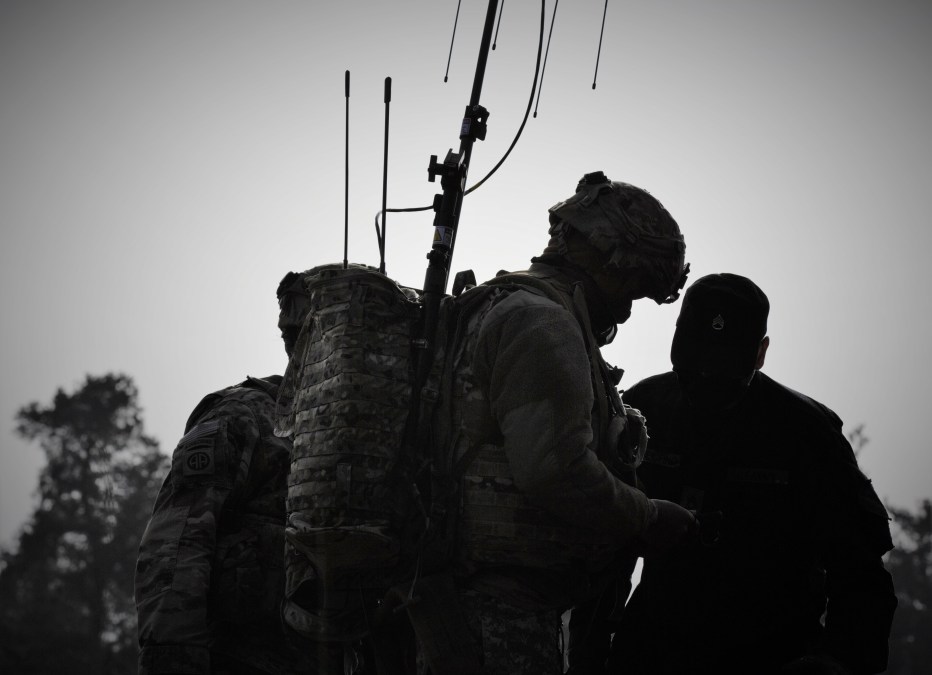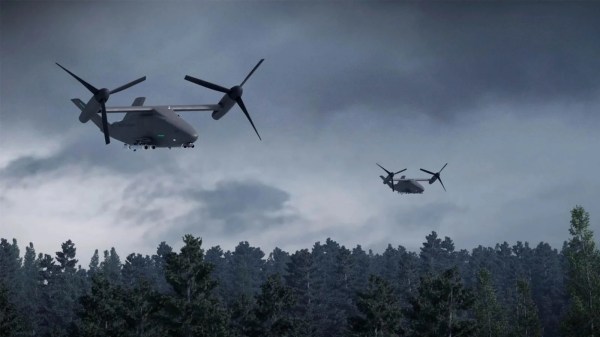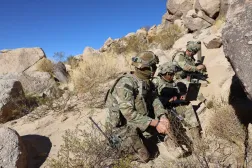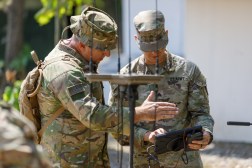Army looking at ‘payload agnostic’ EW capabilities as it modernizes its architecture

AUGUSTA, Ga. — As the Army looks to rebuild its electronic warfare arsenal, it is developing a battlefield architecture taking a largely agnostic approach to platforms and payloads to maximize warfighter effectiveness in various theaters against a variety of threats.
At the end of the Cold War, the Army divested much of its EW inventory. During the counterinsurgency fights of the last 20 years, the Army used blunt jamming tools to thwart improvised explosive devices, which, in turn, inadvertently jammed friendly systems.
The service still does not have a program of record for jamming equipment, relying on so-called quick reaction capabilities to address urgent commander needs.
“The glaring question for electronic warfare in the Army [is] how do we modernize a force that has no current EW programs [of] record? Because we don’t. There is no programs [of] record currently in the U.S. Army,” Jeffrey Gagnon, deputy Army capabilities manager for electronic warfare within the Cyber Capabilities Development Integration Directorate of the Cyber Center of Excellence, said during a presentation at the TechNet Augusta conference last week.
Other officials noted that while the service is trying to modernize capabilities, it is simultaneously developing force structure, doctrine and training — which compounds the challenge.
Now, as the service is looking to outfit its soldiers with new systems, it’s looking at what the battlefields of the coming decades might look like to anticipate what equipment and tools will be needed.
“What does the [high level concept] look like on the Battlefield of 2030 and 2040? That’s really the answers we’re trying to think through within our shop,” Col. Gary Brock, director, Army Capability Manager Electronic Warfare, said during a presentation at TechNet Augusta.
“When I say programs, these are large requirements, not necessarily tied to a platform, not necessarily tied to a payload, but tied to a requirement for a capability. What do we bring the commanders to the fight? And we’re going to be very commander centric. When we look at the battlefield to 2030, we’re going to division-as-unit action, which is a fundamental shift from the last 21 years where we have fought as brigades,” he added.
Capabilities will be developed to be operated at echelon, modular to adapt to different threats and areas of operation, and able to work in concert between ground and air platforms at various altitudes.
“How do we think through what is that EW arsenal or set the theater by echelon, by capability?” Brock said. “As we think through a lot of these capabilities, we have to remain almost payload agnostic. How do we leave that flexible enough where we can innovate and strive as we move down the road [to] 2030, 2040 and beyond?”
The Army’s requirements developers are working on answering three key questions for commanders as they think about new capabilities. One, can a unit see itself in the electromagnetic spectrum and manage that signature? Two, can a unit see the adversary in the electromagnetic spectrum at much longer distances than in the recent past?
What this echelon approach means is the service is now going to have to contend with joint requirements — especially when it comes to these higher echelons such as division, corps and theater Army — while units further down the chain might rely on technology designed to address Army-specific requirements.
The Army is grappling with the confluence of Army-specific versus joint requirements.
“We think about the EW of the future, we’re thinking about joint Army requirements. Good news is there’s no joint requirements. Bad news is there’s no joint requirements,” Brock said.
The issue of echeloning these effects ties directly into the third question: how does the Army generate those effects?
“Those effects are going to come at echelon. What a corps commander looks for effects and the corps deep fight is different than divisions looking and their deep fight,” Brock said. “The theater Army, much different as well. The theater Army might leverage joint requirements, the corps and division may level Army requirements. How do those mutually support? How do we get into the shaping of the terrain, the battlespace so that we can do our joint mission?”
These types of capabilities fall into three main buckets:
- Ground-launched effects, which could be effects launched from an unmanned system or a portable tube.
- Air-launched effects, which the Army is still developing and experimenting with the concept for, but involves dropping effects from a manned or unmanned airborne asset that is either recoverable or expendable.
- Multi-Function Electronic Warfare-Air Large, a pod capable of serving as the first brigade-organic airborne electronic attack asset and providing limited cyberattack capabilities, which until recently was slated to be outfitted to an MQ-1C Gray Eagle drone. But the Army is now updating that requirement to potentially other aircraft. In fact, Brock referenced the pod as a capability in and of itself, alluding to the fact it could be outfitted to a number of systems depending on the need.
Layering these capabilities and platforms requires an architecture approach. For example, while one of the key capabilities for multi-function EW is electronic intelligence, U.S. forces will have to deconflict this capability with those being developed to operate at higher altitudes and across the services.
“When an [RC-135 Rivet Joint] or a Compass Call or something like that’s flying, we need to be able to tip and cue to get geolocation accuracy and other things,” Mark Kitz, program executive officer for intelligence, electronic warfare and sensors, told FedScoop in an interview at TechNet Augusta. “When you look at electronic warfare as attack and sensing, there are different layers of electronic warfare in that. Are you trying to deliver [an] effect; are [you] trying to sense the environment; and then who are you delivering that information to, is kind of the architecture that we’re focused on investing in and understanding how that sensor data will get to the end user in an effective way.”
Kitz said the Army has been experimenting with this architecture at Project Convergence the last two years.
“If I’m sensing something in commercial [systems], if I’m sensing something from a joint service, how do I get that information in a meaningful way to either a warfighter or to a shooter and then make an assessment very quickly on what that sensor is sensing?” he said, noting Project Convergence 22 will include several prototypes such as the High Accuracy Detection and Exploitation System (HADES) — a jet that is part of the Army’s overall plan to modernize aerial intelligence systems.
Key to this architecture and the ability to tip and cue capabilities will be the Army’s Tactical Intelligence Targeting Access Node (TITAN) program, Kitz said.
TITAN is considered a critical modernization component for the Army’s multi-domain operations concept because it will integrate various types of data from numerous platforms to help commanders make sense of an increasingly dynamic and complex battlefield.
“I think our answer is we’ve got to deliver a TITAN capability that ingests all that sensor data and delivers that effect in a meaningful way,” Kitz said. “We see that as our core foundational capability. There will certainly [be] the other investments, but for the Army, sensor to shooter, sensor to customer, not just sensor to shooter, but sensor to end user — that’ll be our TITAN program.”






